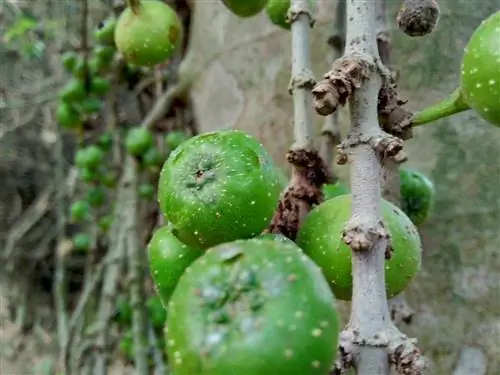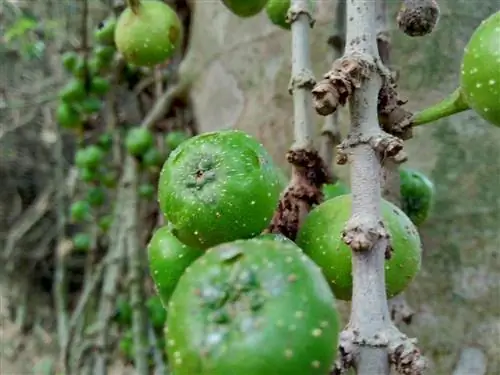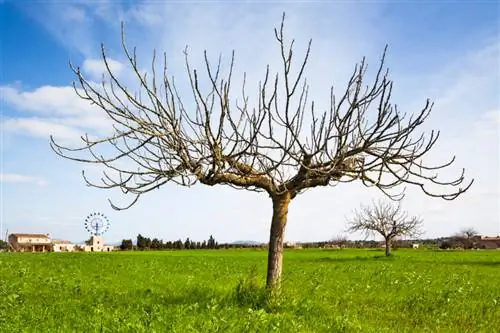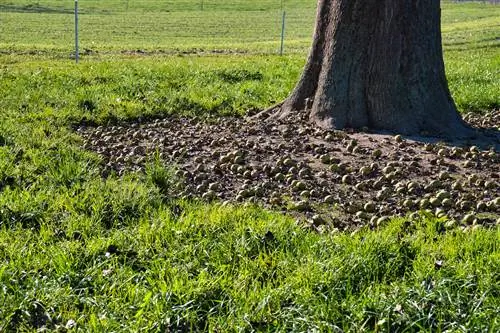- Author admin [email protected].
- Public 2023-12-16 16:46.
- Last modified 2025-01-23 11:22.
Are you struggling with a powerful fig tree (Ficus carica) that drops its thumb-sized, unripe fruits every year? Read here why a fig tree loses its fruit prematurely. You can find out what measures you can take now here.

What to do if a fig tree loses fruit prematurely?
If fruit falls off prematurely on Ficus carica, you shouldreplace the fig tree with a self-fertile fig variety. Wild fig species and longhorn figs can only be pollinated by fig gall wasps, which do not occur in Germany. A fig tree always drops unfertilized fruit.
Why does my fig tree drop fruit too early?
If fruit falls off prematurely on the fig tree, it is awild fig speciesor along-legged fig In both cases, the fig tree depends on the pollination of its inflorescences by a fig gall wasp (Blastophaga psenes), known as a fig wasp for short. The 2 mm small gall wasp species does not occur north of the Alps. Other insects are denied access to the inward-turned fig flowers. The fig tree drops fruit heads without fertilization.
For this reason, most fig varieties in Germany are parthenocarpic, i.e. self-pollinating.
How can I stop figs from falling off prematurely?
You shouldexchange a fig tree that loses unfertilized fruit with a self-fertile, winter-hardy fig variety. If space in the garden allows, you can combine wild figs, longhorn figs and self-fertile figs. These fig varieties do not lose any fruit, but provide you with rich harvest yields in beds and containers:
- Brown Turkey, also produces reddish-brown, juicy figs in northern Germany.
- Verdone, late ripening with blue-violet fruits.
- Dalmatia, twice bearing, yellow-green figs with vanilla aroma.
- Desert King, high-yielding summer fig, hardy from the 2nd year onwards.
- Pastilière, early autumn fig with blue fruits.
Tip
Pinching accelerates fruit ripening on the fig tree
If the fruit on the late summer fig tree does not ripen, you can intervene to regulate it with targeted pruning. The procedure is similar to that of thinning out tomato plants. The best time is mid-August. Cut vigorously growing branches back to 5 cm above a half-ripe fig. On branches with dense fruit, thin out a third of the unripe figs.






